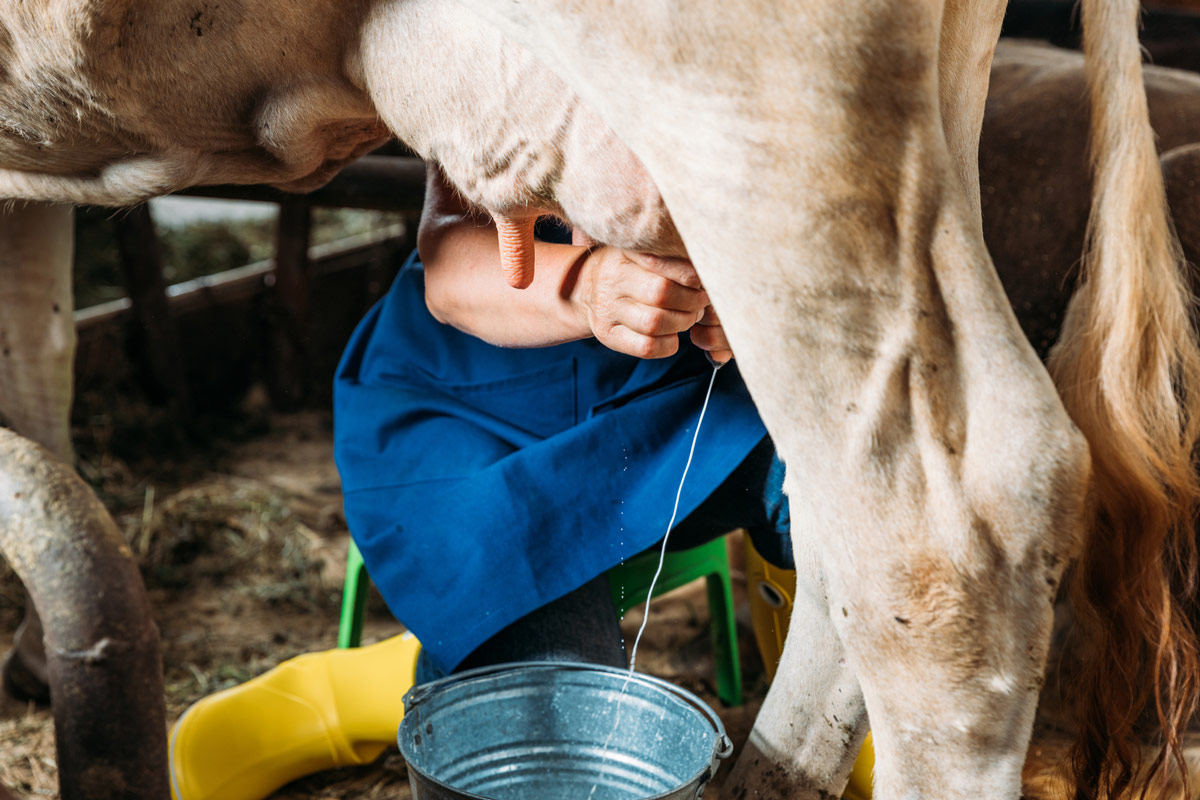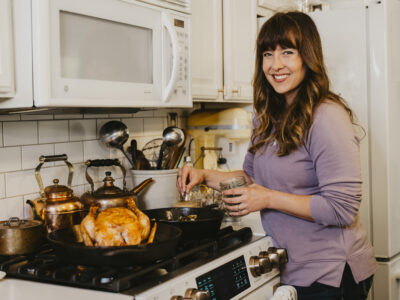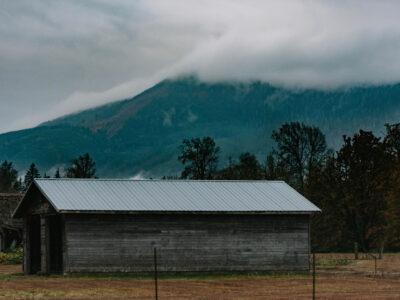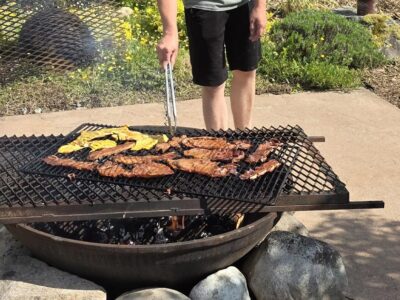Learn the best breed of dairy cow to get if you’re wanting to make cheese! This post also has feeding and milking tips, as well as the differences in milk production from breed to breed.
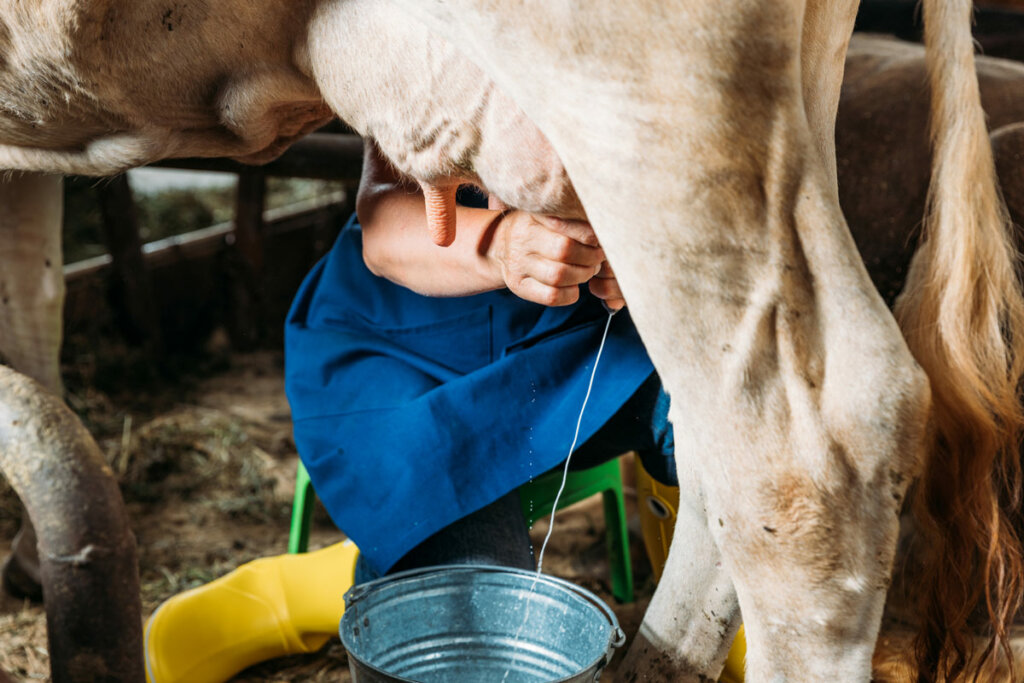
At the time of this podcast, May 2022, we are about five weeks into our journey of owning a dairy cow.
Even before we knew we were getting a dairy cow, I had Kate, from Venison for Dinner scheduled to come on the podcast (Pioneering Today Podcast, episode #344).
Now that we’re new cow owners, I’m so excited to get to pick her brain and glean the wisdom she’s acquired from raising her own dairy cows.
Though it’s been a number of years, my podcast interview with Jill Winger is a great resource on the 8 things you need to know before getting a family milk cow and so is my interview with Katie Millhorn about the benefits of A2 milk.

Table of Contents[Hide][Show]
Who is Kate?
Kate lives in Northern British Columbia, Canada and she and her family live on a 34-acre homestead. They raise their own meat, dairy, and vegetables, as well as homeschool their five children.
She is a blogger and YouTube creator and I have no doubt you’ll absolutely love her! Be sure to scroll to the bottom of this post for where you can find Kate online.
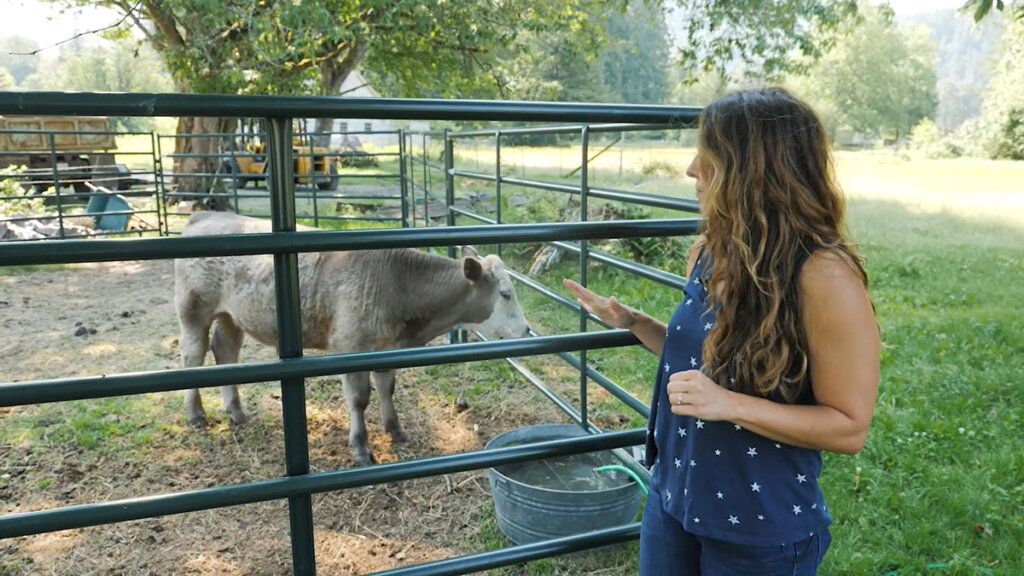
Beef Cattle vs. Dairy Cows
Kate refers to beef cattle as your old farm truck. They can pretty much run on any hay you feed them, can be out in the weather and they’ll do just fine.
Be sure to check out my posts on raising grass-fed beef, the cuts of beef to request from the butcher, and the pros and cons of raising your own grass-fed beef.
A dairy cow is like a fancy car that you feed premium fuel and park in the garage. Their systems run completely different than cattle and the way you feed them will make a difference in the production and quality of their milk.
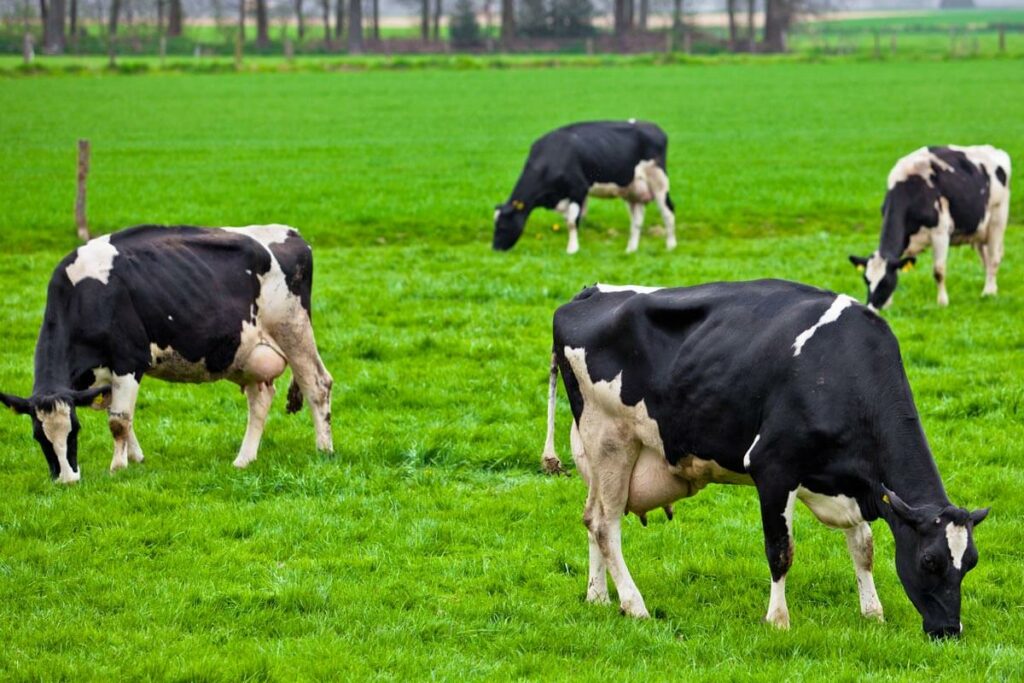
What to Feed a Dairy Cow
When it comes to raising a dairy cow, sourcing hay is definitely something you’re going to need to consider. Unless, of course, you happen to live where grass grows year-round!
Where Kate and I live, further north in Washington State and Canada, we have to supplement hay throughout the fall, winter, and spring months because grass simply doesn’t grow year-round.
Kate has worked out a great system with a fellow farmer. Because Kate’s family owns about 20-25 acres of pasture (but both she and her husband have no interest in tending to hayfields), they allow their neighbor to manage the hayfields and they simply get 1/3 of the hay in return.
This works extremely well for both parties and is a great way to maximize the use of the land and resources you have available.

Type of Hay
It’s important that you don’t make the mistake of jumping into getting a dairy cow thinking that you’ll just buy the cheapest hay you can find. Generally speaking, there’s a reason that hay is cheap.
You want to be considering the animal’s needs first.
Kate feeds haylage to her dairy cows over 200 days a year. They don’t feed hay, they use haylage because there are many years when they can’t actually get hay due to poor growing conditions that year.
Haylage is fermented hay that provides good bacteria for the cow’s gut. It’s moist and softer than hay.
Kate noticed that when her cows are feeding on haylage they actually need less water. This is fantastic for Kate because they have to haul in water to the cows.
Feed Terminology
Depending on where you live, the terminology of these feed products may be different.
- Haylage or baylage is grass-based fermented hay. This is what both Kate and I feed our dairy cows.
- Silage is fermented corn or grain-based feed.
Be sure you know the difference before you jump in and buy a large portion of feed (which will save you money if you can buy in bulk ahead of time). Check out this post for more info on buying feed in bulk.
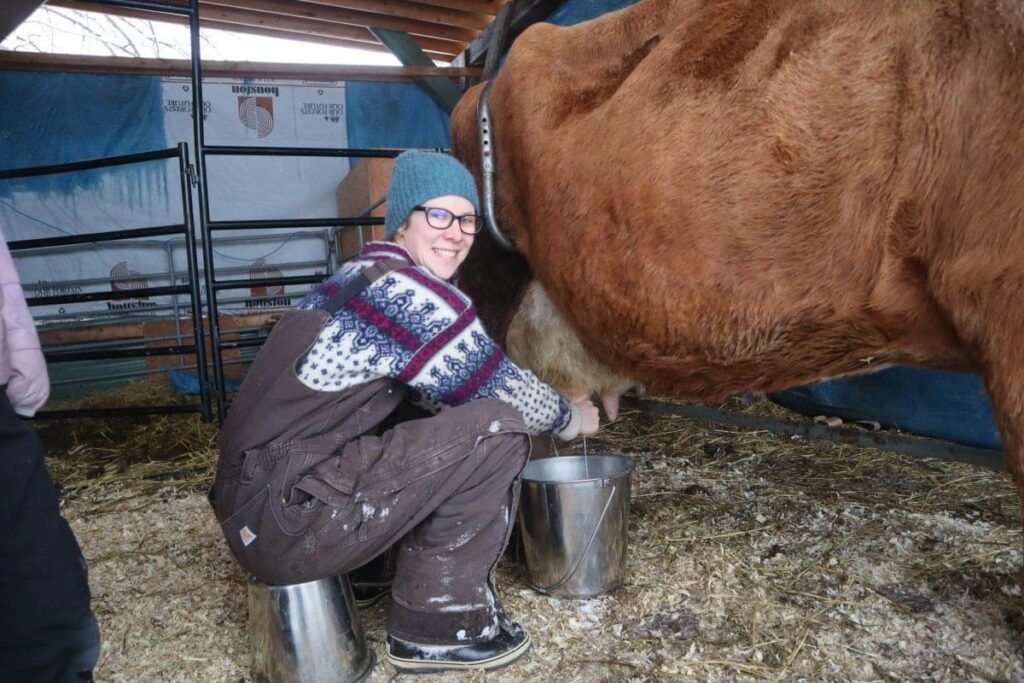
Grain vs. Grass
Feeding cows predominantly grain instead of grass changes the pH in their rumen. Neither Kate nor I recommend feeding your dairy cow large amounts of grain.
There is one caveat and that’s if you get your cow and it’s already been fed predominately grain. You can’t simply convert a grain-fed cow to a grass-fed cow. It can actually be dangerous and need to be done slowly over time.
Cows weren’t meant to solely live on grain alone or even have it as a large portion of their diet. And giving the calves a good healthy start by solely feeding them milk is in their best interest.
Century Farmer (on Instagram) encouraged Kate to feed her heifers only milk for six months as this sets them up for a healthier life metabolically.
If you start feeding grain to calves right away their rumen starts developing faster and, as mentioned before, changes the pH. *Certain larger farms want that because it speeds up when the calves can be fully weaned and the dairy will get more milk to sell, so they actually start feeding the calves grain from day one. They’re only fed about 3 liters of milk twice a day until they’re four months old.
Kate doesn’t feed grain to her calves and commits to only milk for those first six months so set the calves up for the best health possible.
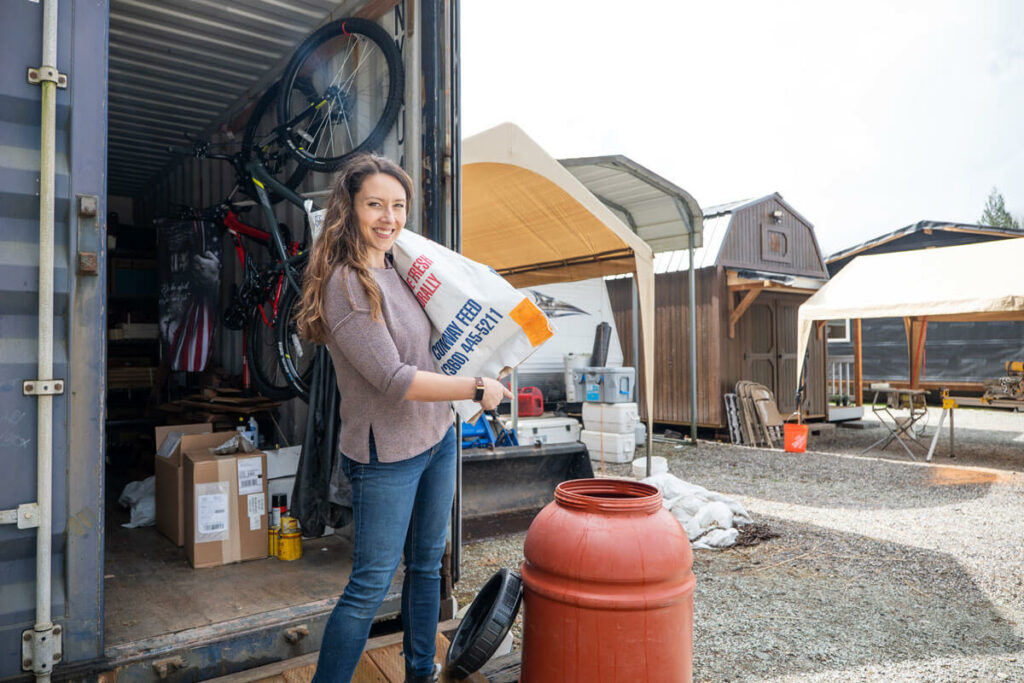
Is Some Grain OK for Dairy Cows?
Don’t get the wrong idea when we’re talking about grass-fed vs. grain-fed cows. Feeding your dairy cow a little bit of grain every day isn’t a bad thing.
Actually, feeding your cows up to five pounds of grain daily (about 2.5 pounds at each milking) can increase the cow’s milk supply significantly.
So if you’re only getting one to two gallons from your cow per day, which may not be enough to make all the dairy products for your family, then consider introducing a bit of grain while milking.
I do, however, recommend buying non-GMO and/or organic feed when possible.
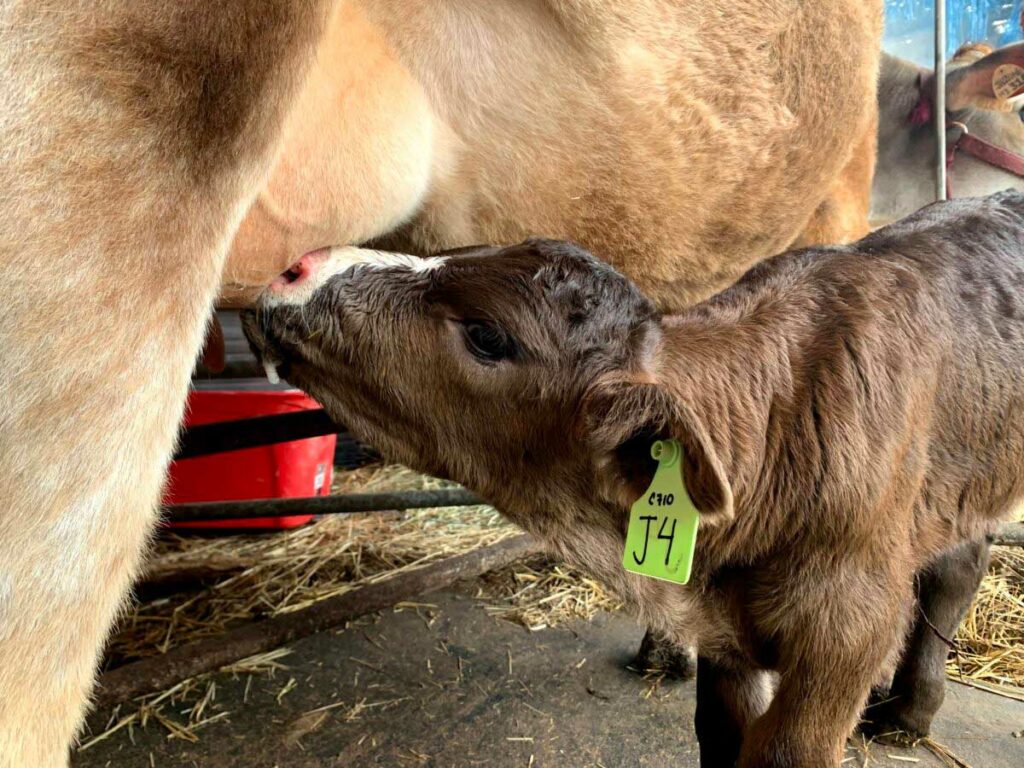
Natural Breeding or AI (Artificial Insemination)
There are two choices when it comes to breeding. You can track your cow’s heat cycle and use AI if you want to ensure specific genetics. You can even get so specific as to choose sexed semen if you want to ensure you get either a girl or boy calf.
If you have a bull, you can breed your cows the natural way, but you’ll want to know the genetics and history of the bull if you’re hoping for a specific outcome.
Either way, you’ll want to know the signs to watch for with an expecting cow.
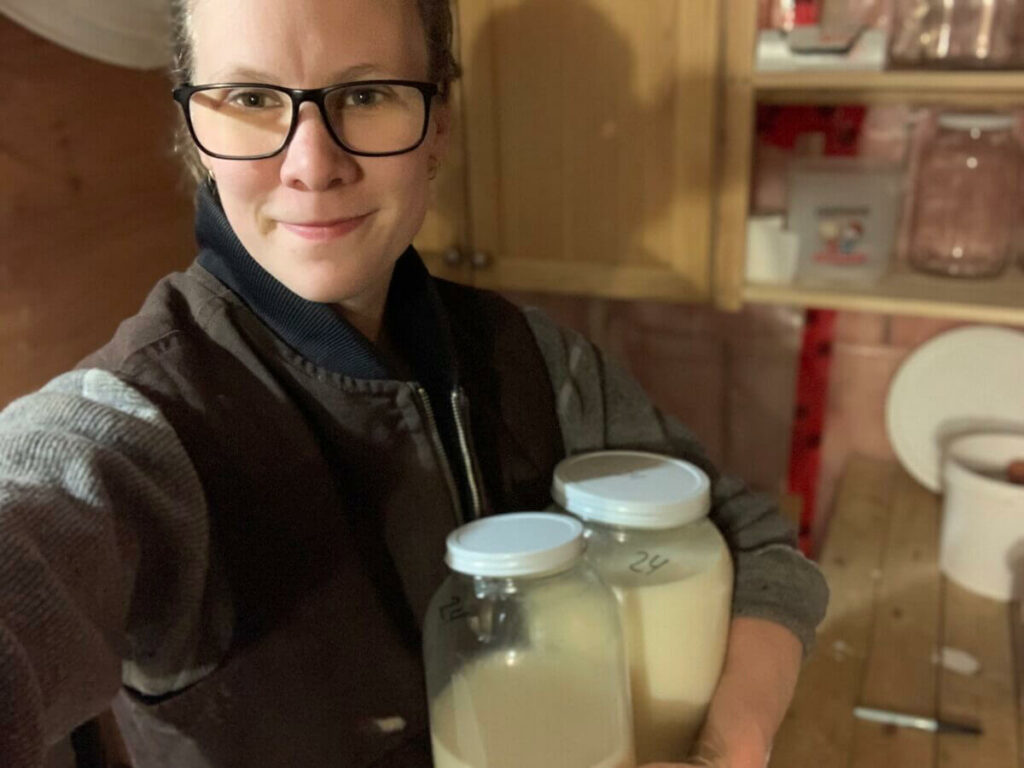
What to Do With All that Milk?
Kate always gets asked the question, “What will I do with four gallons of milk a day?”
Her answer to this is that many people don’t take into consideration the amount of cream it takes to make just one pound of butter.
If your goal in owning a milk cow is to be self-sufficient for all your dairy products, then you’ll be utilizing a whole lot of milk and cream to do so.
A single seven-gallon wheel of cheese is going to produce a lot of whey. I can then make ricotta from that whey but there will still be some remaining.
That whey then goes to the pigs or chickens and helps reduce our overall feed bill.
But Kate also shares that she’s not making butter and cheese year-round. She’s making enough butter and cheese while the cows are producing a lot of milk in order to get her family through the entire year when they’re not producing as much, or during those times the cows need to be dried up for calving.
Raw Milk Doesn’t Go Bad!
Something else to consider about raw milk is that it doesn’t go bad, it just goes through different stages.
For drinking, you’ll want to enjoy fresh milk within about a week of milking. But if you allow the milk to curdle or ferment, it’s great for turning into yogurt or cheese. Or, if it gets just a little too sour for your liking, you can mix it into your chicken or pig feed and feed the animals.
As for the cream, if it’s allowed to sit for a long period of time, it can get a little off tasting as well, but then it’s great for turning into butter (Kate uses this butter for baking) or sour cream.
Kate also loves making heavy cream drop biscuits with her excess cream that’s gone beyond using in her coffee.

Breeds of Cows for Cheese Making
I was having trouble with a cheese recipe a while back and Kate actually shared with me that different breeds of cows have different effects on cheese making.
The two things you’re looking for when making cheese with milk are the protein (Kappa casein) and the butterfat content.
Kappa-casein comes in different combinations. Kappa BB is the highest yielding cheese protein, and AA or AE is your lowest protein. This was studied because some Italian cheesemakers were noticing the different yields of cheese based on the milk and wondered why it was happening.
Holsteins are likely to have lower protein percentages and lower fat percentages which then yield a lower amount of cheese from their milk.
Kate says when she makes a six or seven-gallon wheel of cheese, she’ll actually get one to two pounds less cheese when using Holstein milk. Jerseys have higher protein and fat, Brown Swiss are known for their high protein and they’re a mid-level fat.
Each breed has its averages, so you may have outliers. The average grocery store whole milk has an average of about 3.5 milkfat.
Here is more information on natural cheese making using ancestral methods.

Milk Cow FAQs
Can You Increase Cream Production in Cows?
Kate shares that different breeds will produce different amounts of cream, and even within breeds you’ll have those that produce more or less.
Kate likes to see a minimum of two fingers of a cream line in a one-gallon jar of milk. Some cows will produce closer to three or four fingers of cream (closer to a quart).
But she’s found in her years of raising cows that changing their diet doesn’t necessarily increase or reduce the amount of cream the cows produce, but it does affect the quantity of their milk.
So though it may look like you’re getting more or less cream, it’s likely you’re getting the same amount of cream in more or less milk.
Are Cream Separators Worth It?
I asked Kate if she recommended getting a cream separator and she jokingly asked how much I like doing dishes.
Because we don’t have a dishwasher, she said skimming milk by hand is the best way!
Kate actually stores her milk in 3.5-gallon tubs in her milk refrigerator. 24 hours after milking she’ll skim the cream off with a 1-cup ladle. This is the fastest “redneck” cream separator that Kate has tried.
How Much Time Does it Take to Milk a Cow?
People always ask how much time it takes to milk a cow. The actual milking takes only 10-15 minutes, but the rest of the time can be upwards of 30 more minutes.
Can Cows Survive in Really Cold Winter?
I was curious to know if cow’s teets would be at risk of frostbite during extremely cold temperatures during the winter.
Kate assured me the cows will be fine, it’s more about your own hands and extremities to consider. She did say that temperatures below minus 30 degrees F get really tough on your hands because they just don’t want to function as well.
Where to Find Kate
You can find Kate on Facebook, Instagram, YouTube and her website, Venison for Dinner.
Links Mentioned & Other Posts You May Enjoy
- Homestead Living Magazine – The second edition of the Homestead Living Magazine is now available. Also, when you purchase an annual subscription you’ll get the past issue included!
- Century Farmer on Instagram
- How to Preserve Dairy, Meat & Eggs
- Fermented Dairy: Why You Should Be Doing This Now
- How to Make Real Buttermilk (Cultured Buttermilk Recipe)
- Easy, Flaky Homemade Buttermilk Biscuit Recipe
- How to Make Flavored Butter
- How to Make Homemade Yogurt that’s Thick and Creamy
- 8 Things You Need to Know about Keeping a Family Milk Cow
- Stocking Up on Animal Feed (Buy Now, Save Later)
- Your Livestock Questions Answered
- Scottish Highland Cows: A Unique Cattle Breed
[fusebox_transcript]
